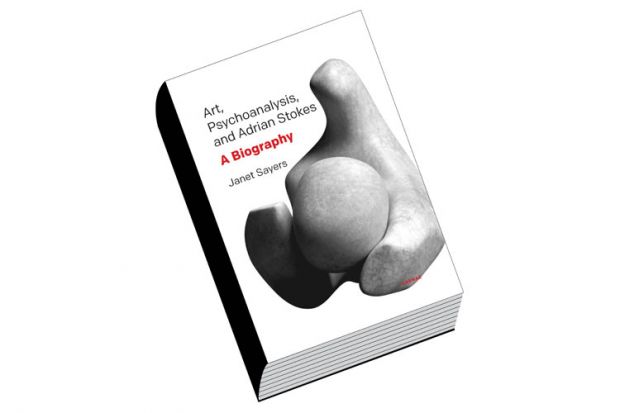I knew of Adrian Stokes (1902-72) as Mr B, the patient of the psychoanalyst Melanie Klein who would serve as her major case of male homosexuality, and through his concept of architecture as reparation for the “phantasmatic damage” inflicted by the infant on the mother’s body.
That hazy knowledge has been enriched by Janet Sayers’ book, which explores Stokes’ life in meticulous detail, drawing on his correspondence, conversations with his sons, his diaries and manuscripts, including unpublished writings, and interviews with those who knew him. She traces his life with sympathy and discretion: a domineering father, a beloved brother lost in the Battle of the Somme, another brother he disliked yet whom he supported during a protracted illness, a mother he described as vain. We learn of his self-education as an art historian; the depression (not his homo- or bisexuality) that led him to seek an analyst and his sustained relation as analysand and friend of Klein; his move to study painting at the Euston Road School in 1937; his marriage (he decided he must marry), divorce and remarriage; and a network of friends redolent of Brideshead Revisited, a milieu of culture, unexamined privilege, casual anti-Semitism and inherited wealth.
Sayers assesses his importance as an art historian, although he was later marginalised, and his work on Italian Renaissance sculpture and the Ballets Russes. He had a gift for friendship, and she follows his connections to Ezra Pound, W. H. Auden, artists Barbara Hepworth and Ben Nicholson, philosopher Richard Wollheim and many others.
As a biographer, Sayers remains distant; although she is involved in her subject, much is unsaid. The book’s thematic sections lead to some repetition and a somewhat linear reading, as though conceived as a series of essays written over time. She raises questions, and while providing much information, especially through extended quotation from Stokes’ ornate, evocative and often impenetrable writing, leaves these largely unanswered. On first reading this seems a weakness. Subsequently, however, it encourages the reader to draw connections between Stokes’ experience of psychoanalysis and his approach to art as an externalisation of inner emotion, as parts brought together in a whole, between his often troubled life and his vivid writing, between mental life and the physical world, and the oscillation between love and hate towards others, and a mother “destroyed [in] fantasy and act”.
Despite the wealth of detail, Stokes is an unreachable figure. Even when he is moved by a passionate love – for Ann Mellis, his wife’s sister, whom he later married – his passion appears sudden, inexplicable. He is most present in a compelling account of a painting of Klein commissioned from William Coldstream, which Klein rejected and which Stokes asked his wife to destroy, because he could not (the work of art or the analyst-mother?).
This is a book of revealing images, conveyed in words as well as in its many illustrations and photographs: his thick blond hair, blue eyes, face crossed with fragile tiny lines; his richly evocative writing and landscape paintings; and hauntingly, the image of his child Ariadne, schizophrenic or autistic, his “beautiful unbending daughter”, flapping her hands – she called it “birding” – in an echo of the movements Stokes made when thinking.
Sharon Kivland, an artist and writer, is reader in fine art at Sheffield Hallam University.
Art, Psychoanalysis, and Adrian Stokes: A Biography
By Janet Sayers
Karnac Books, 352pp, £35.00
ISBN 9781782202837 and 2414056 (e-book)
Published 29 June 2015
POSTSCRIPT:
Print headline: Coming out of the dark
Register to continue
Why register?
- Registration is free and only takes a moment
- Once registered, you can read 3 articles a month
- Sign up for our newsletter
Subscribe
Or subscribe for unlimited access to:
- Unlimited access to news, views, insights & reviews
- Digital editions
- Digital access to THE’s university and college rankings analysis
Already registered or a current subscriber? Login




